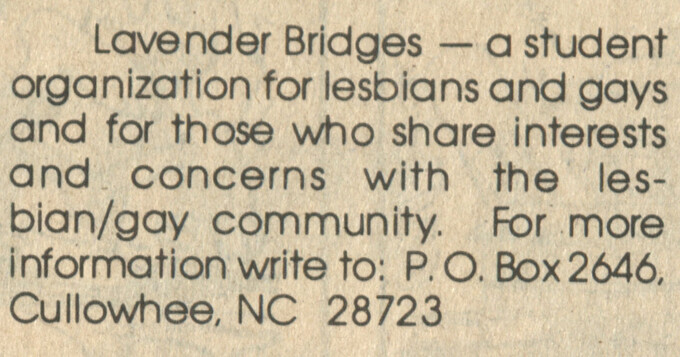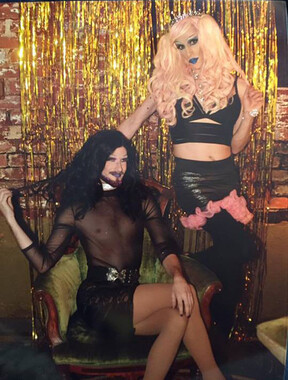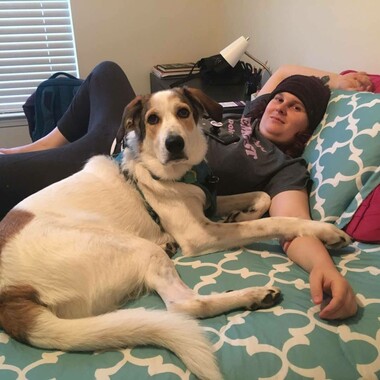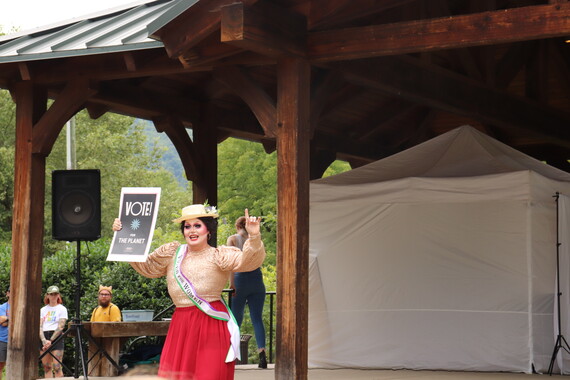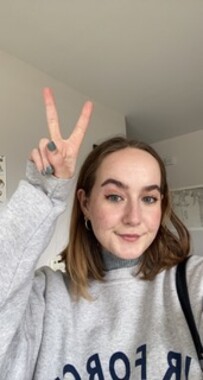Western Carolina University (20)
View all
- Canton Champion Fibre Company (2308)
- Cherokee Traditions (293)
- Civil War in Southern Appalachia (165)
- Craft Revival (1942)
- Great Smoky Mountains - A Park for America (2683)
- Highlights from Western Carolina University (430)
- Horace Kephart (941)
- Journeys Through Jackson (154)
- LGBTQIA+ Archive of Jackson County (15)
- Oral Histories of Western North Carolina (314)
- Picturing Appalachia (6679)
- Stories of Mountain Folk (413)
- Travel Western North Carolina (160)
- Western Carolina University Fine Art Museum Vitreograph Collection (129)
- Western Carolina University Herbarium (92)
- Western Carolina University: Making Memories (708)
- Western Carolina University Publications (2283)
- Western Carolina University Restricted Electronic Theses and Dissertations (146)
- Western North Carolina Regional Maps (71)
- World War II in Southern Appalachia (131)
University of North Carolina Asheville (6)
View all
- Allanstand Cottage Industries (62)
- Appalachian National Park Association (53)
- Bennett, Kelly, 1890-1974 (1295)
- Berry, Walter (76)
- Brasstown Carvers (40)
- Carver, George Washington, 1864?-1943 (26)
- Cathey, Joseph, 1803-1874 (1)
- Champion Fibre Company (233)
- Champion Paper and Fibre Company (297)
- Cherokee Indian Fair Association (16)
- Cherokee Language Program (22)
- Crowe, Amanda (40)
- Edmonston, Thomas Benton, 1842-1907 (7)
- Ensley, A. L. (Abraham Lincoln), 1865-1948 (275)
- Fromer, Irving Rhodes, 1913-1994 (70)
- George Butz (BFS 1907) (46)
- Goodrich, Frances Louisa (120)
- Grant, George Alexander, 1891-1964 (96)
- Heard, Marian Gladys (60)
- Kephart, Calvin, 1883-1969 (15)
- Kephart, Horace, 1862-1931 (313)
- Kephart, Laura, 1862-1954 (39)
- Laney, Gideon Thomas, 1889-1976 (439)
- Masa, George, 1881-1933 (61)
- McElhinney, William Julian, 1896-1953 (44)
- Niggli, Josephina, 1910-1983 (10)
- North Carolina Park Commission (105)
- Osborne, Kezia Stradley (9)
- Owens, Samuel Robert, 1918-1995 (11)
- Penland Weavers and Potters (36)
- Roberts, Vivienne (15)
- Roth, Albert, 1890-1974 (142)
- Schenck, Carl Alwin, 1868-1955 (1)
- Sherrill's Photography Studio (2565)
- Southern Highland Handicraft Guild (127)
- Southern Highlanders, Inc. (71)
- Stalcup, Jesse Bryson (46)
- Stearns, I. K. (213)
- Thompson, James Edward, 1880-1976 (226)
- United States. Indian Arts and Crafts Board (130)
- USFS (683)
- Vance, Zebulon Baird, 1830-1894 (1)
- Weaver, Zebulon, 1872-1948 (58)
- Western Carolina College (230)
- Western Carolina Teachers College (282)
- Western Carolina University (1794)
- Western Carolina University. Mountain Heritage Center (18)
- Whitman, Walt, 1819-1892 (10)
- Wilburn, Hiram Coleman, 1880-1967 (73)
- Williams, Isadora (3)
- Cain, Doreyl Ammons (0)
- Crittenden, Lorraine (0)
- Rhodes, Judy (0)
- Smith, Edward Clark (0)
- Appalachian Region, Southern (2393)
- Asheville (N.C.) (1886)
- Avery County (N.C.) (26)
- Blount County (Tenn.) (147)
- Buncombe County (N.C.) (1664)
- Cherokee County (N.C.) (283)
- Clay County (N.C.) (555)
- Graham County (N.C.) (233)
- Great Smoky Mountains National Park (N.C. and Tenn.) (478)
- Haywood County (N.C.) (3522)
- Henderson County (N.C.) (70)
- Jackson County (N.C.) (4692)
- Knox County (Tenn.) (21)
- Knoxville (Tenn.) (9)
- Lake Santeetlah (N.C.) (10)
- Macon County (N.C.) (420)
- Madison County (N.C.) (211)
- McDowell County (N.C.) (39)
- Mitchell County (N.C.) (132)
- Polk County (N.C.) (35)
- Qualla Boundary (981)
- Rutherford County (N.C.) (76)
- Swain County (N.C.) (2017)
- Transylvania County (N.C.) (247)
- Watauga County (N.C.) (12)
- Waynesville (N.C.) (68)
- Yancey County (N.C.) (72)
- Aerial Photographs (3)
- Aerial Views (60)
- Albums (books) (4)
- Articles (1)
- Artifacts (object Genre) (228)
- Biography (general Genre) (2)
- Cards (information Artifacts) (38)
- Clippings (information Artifacts) (191)
- Crafts (art Genres) (622)
- Depictions (visual Works) (21)
- Design Drawings (1)
- Drawings (visual Works) (184)
- Envelopes (73)
- Facsimiles (reproductions) (1)
- Fiction (general Genre) (4)
- Financial Records (12)
- Fliers (printed Matter) (67)
- Glass Plate Negatives (381)
- Guidebooks (2)
- Internegatives (10)
- Interviews (811)
- Land Surveys (102)
- Letters (correspondence) (1013)
- Manuscripts (documents) (619)
- Maps (documents) (159)
- Memorandums (25)
- Minutes (administrative Records) (59)
- Negatives (photographs) (5651)
- Newsletters (1285)
- Newspapers (2)
- Occupation Currency (1)
- Paintings (visual Works) (1)
- Pen And Ink Drawings (1)
- Periodicals (193)
- Personal Narratives (7)
- Photographs (12982)
- Plans (maps) (1)
- Poetry (5)
- Portraits (1544)
- Postcards (329)
- Programs (documents) (151)
- Publications (documents) (2237)
- Questionnaires (65)
- Scrapbooks (282)
- Sheet Music (1)
- Slides (photographs) (402)
- Sound Recordings (796)
- Specimens (92)
- Speeches (documents) (15)
- Tintypes (photographs) (8)
- Transcripts (322)
- Video Recordings (physical Artifacts) (23)
- Vitreographs (129)
- Text Messages (0)
- A.L. Ensley Collection (275)
- Appalachian Industrial School Records (7)
- Appalachian National Park Association Records (336)
- Axley-Meroney Collection (2)
- Bayard Wootten Photograph Collection (20)
- Bethel Rural Community Organization Collection (7)
- Blumer Collection (5)
- C.W. Slagle Collection (20)
- Canton Area Historical Museum (2110)
- Carlos C. Campbell Collection (198)
- Cataloochee History Project (65)
- Cherokee Studies Collection (4)
- Daisy Dame Photograph Album (5)
- Daniel Boone VI Collection (1)
- Doris Ulmann Photograph Collection (112)
- Elizabeth H. Lasley Collection (1)
- Elizabeth Woolworth Szold Fleharty Collection (4)
- Frank Fry Collection (95)
- George Masa Collection (173)
- Gideon Laney Collection (452)
- Hazel Scarborough Collection (2)
- Hiram C. Wilburn Papers (28)
- Historic Photographs Collection (236)
- Horace Kephart Collection (861)
- Humbard Collection (33)
- Hunter and Weaver Families Collection (1)
- I. D. Blumenthal Collection (4)
- Isadora Williams Collection (4)
- Jesse Bryson Stalcup Collection (47)
- Jim Thompson Collection (224)
- John B. Battle Collection (7)
- John C. Campbell Folk School Records (80)
- John Parris Collection (6)
- Judaculla Rock project (2)
- Kelly Bennett Collection (1314)
- Love Family Papers (11)
- Major Wiley Parris Civil War Letters (3)
- Map Collection (12)
- McFee-Misemer Civil War Letters (34)
- Mountain Heritage Center Collection (4)
- Norburn - Robertson - Thomson Families Collection (44)
- Pauline Hood Collection (7)
- Pre-Guild Collection (2)
- Qualla Arts and Crafts Mutual Collection (12)
- R.A. Romanes Collection (681)
- Rosser H. Taylor Collection (1)
- Samuel Robert Owens Collection (94)
- Sara Madison Collection (144)
- Sherrill Studio Photo Collection (2558)
- Smoky Mountains Hiking Club Collection (616)
- Stories of Mountain Folk - Radio Programs (374)
- The Reporter, Western Carolina University (510)
- Venoy and Elizabeth Reed Collection (16)
- WCU Gender and Sexuality Oral History Project (32)
- WCU Mountain Heritage Center Oral Histories (25)
- WCU Oral History Collection - Mountain People, Mountain Lives (71)
- WCU Students Newspapers Collection (1744)
- Western North Carolina Tomorrow Black Oral History Project (69)
- William Williams Stringfield Collection (2)
- Zebulon Weaver Collection (109)
- African Americans (388)
- Appalachian Trail (32)
- Artisans (521)
- Cherokee art (84)
- Cherokee artists -- North Carolina (10)
- Cherokee language (21)
- Cherokee pottery (101)
- Cherokee women (208)
- Church buildings (166)
- Civilian Conservation Corps (U.S.) (110)
- College student newspapers and periodicals (1830)
- Dams (94)
- Dance (1023)
- Education (222)
- Floods (60)
- Folk music (1015)
- Forced removal, 1813-1903 (2)
- Forest conservation (220)
- Forests and forestry (904)
- Gender nonconformity (4)
- Great Smoky Mountains National Park (N.C. and Tenn.) (154)
- Hunting (38)
- Landscape photography (10)
- Logging (103)
- Maps (84)
- Mines and mineral resources (8)
- North Carolina -- Maps (18)
- Paper industry (38)
- Postcards (255)
- Pottery (135)
- Railroad trains (69)
- Rural electrification -- North Carolina, Western (3)
- School integration -- Southern States (2)
- Segregation -- North Carolina, Western (5)
- Slavery (5)
- Sports (452)
- Storytelling (245)
- Waterfalls -- Great Smoky Mountains (N.C. and Tenn.) (66)
- Weaving -- Appalachian Region, Southern (280)
- Wood-carving -- Appalachian Region, Southern (328)
- World War, 1939-1945 (173)
Interview with Skylar Shay
Item
Item’s are ‘child’ level descriptions to ‘parent’ objects, (e.g. one page of a whole book).
-
-
Shay 1 GENDER & SEXUALITY ORAL HISTORY PROJECT DRAG QUEENS Interviewee: Skylar Shay Interviewer: Sarah Steiner Location: Cullowhee, NC Date: September 25, 2018 Duration: 37:55: 10 pages Sarah Steiner: My name is Sarah Steiner and I’m here with Tyler Melvin whose drag name is Skylar Shay, it’s September 25, 2018. And we are in Cullowhee, North Carolina and we’re going to be talking about Tyler’s life and drag experiences in western North Carolina. Skylar Shay: Yeah, no problem. Steiner: So let’s start. Tell us a little bit about your life starting with your childhood. Shay: Well, I grew up in Hickory, North Carolina and my entire family was for the most part born and raised in Hickory, North Carolina so not a whole lot of exposure to other areas, other cultures, other types of people. That’s kind of the standard from where I grew up. Coming all through elementary school, middle school, lived the typical American boy lifestyle if you will, and then around 7th or 8th grade I started to get picked on a lot for being feminine, you know, people would call me gay and all of these things. And at that point, I didn’t really know what the term “gay” meant, and that was something we never really talked about in my family because we were Southern Baptists so those were conversations that were just off the table, period. So it wasn’t until I essentially just started experimenting with conversations, and different groups of people and being in different social settings I really started to understand what this culture, what this “lifestyle” as we call it was like. Then all through high school I was outed by some friends so got back to church, got back to family and it was all of that craziness. So long story short, I’m in high school, my parents, my dad specifically because I didn’t live with my mother, parents were divorced, little bit of context, kicked me out for being a queer and among other things. So at that point in and out of group homes, living out of my car, couch surfing with friends, working as many jobs as I could outside of my high school career to just kind of pay for my living expenses whether it was rent or whether it was food or whether it was school supplies, whatever it may be. Then I had a few high school mentors that pushed me to go to college, helped me with the application process and all of that jazz. Got into college at Western Carolina University, did my undergraduate career, graduated with my bachelor’s degree in business administration. And now I am still here pursuing my masters in higher education student affairs. Which brings us to today. Steiner: Nice. Thank you. Tell me a little bit about how you came to be here specifically in Cullowhee? What brought you to that? Shay: That’s a great question and it’s honestly not as nuanced as you think. One of my best friends from high school who I ended up living with for some time because I was not living with my parents at that time, she was applying to Western for the anthropology program specifically, forensic anthropology, and she was like we should just go to college together, we could be roommates together and this whole Shay 2 fantasy-land of what best friends could be. So I ended up applying here, and it was not my first choice, and I was actually waitlisted. And I cheered in high school so I was like if I’m going to commit to go to college I want to bring a piece of myself to my college experience so I tried out for the cheerleading team my freshman year and ended up making the cheerleading team. So then my waitlisted status was moved to an accepted status and at that point my best friend had still planned on coming here so I immediately accepted to come here. Although she never actually came, that’s what got me to campus was my best friend pushing me to apply and then making the cheer team was the straw that broke the camel’s back that got me on campus. Steiner: Would you mind sharing a little bit more about sort of the experience you mentioned when you were kicked out and sort of the what happened with, you said your friends either intentionally or accidently outed you. Elaborate a little? Shay: Yeah, so my freshman year of high school I made a friend, his name was Monty and he was the coolest person I had ever met. He was the typical angsty teen, very grungy, very rock and roll band t-shirts, had colorful shoe strings and was such a cool dude. And I used to hang out with him all the time and he identified at that point in time as bisexual. And as a 14 year old high school student I did not know what that term meant. So after conversations with him and just hang-out sessions with him, he really unpacked what that meant. So then I was like, oh that’s really awesome. And he would always tell me about his experiences. And throughout the beginnings of our relationship, at the formation of our relationship I was secretly dating a guy on the side, but did not have the courage to tell anybody. So one night I text that friend Monty and was like hey, just to let you know, because I want to be completely transparent with you because I trust you that like, I think I might identify as bisexual as well and I low-key am talking to a guy on the side can we have some conversation about it because I’m freaking out. So we had a conversation that night via text message and he happened to have a girlfriend at the time who as attracted to me. And then she the next day responded to all of the text messages that I had sent him through her personal cell phone with a text message “Hey I read your conversation with Monty. I hear that you’re bisexual, I think that you and I should get together to really determine whether you are or you’re not” and was insinuating that her and I should have sex. And if I did not the implications of her and I not having sex would be that she would out me to the entire school. Which is exactly what she did. Like Regina did in Mean Girls, how she printed out flyers and put them around campus, that’s exactly what she did. She screenshotted the text messages where I was coming out to my best friend Monty, printed them out and threw them all around the high school the very next day. So then I was outed. So there was lots of uproar, it was a campus-wide thing, and then it was a huge Twitter scandal, so that day specifically, the administrators pulled me in the office and had me sit in the office to avoid any hostility or harassment that may come from it because it was such a huge scandal. So then that carried over into my family finding out and then my friends finding out and then to make matters worse, not only was I coming out as, to my parents gay, because there is no bisexual, it’s either you’re straight or you’re gay because that’s how my parents view the world, and that is what it is. So they just automatically assumed okay, this individual is gay, to make matters worse, the guy that I was seeing was black and my parents and family are extremely conservative and racist so that was two birds with one stone. That was like, hell no, out the door, bye bye. So I was 15, and my parents kicked me out and for the first month I was living in my car. And I did my very best to not let it show, and I was doing really well for the first couple of weeks, but not being able to stay as groomed as I used to or shower as often as I used to and not being as excited or upbeat in classes, my friends started to notice. And then one friend in particular Shay 3 happened to follow me one day after classes because I would get in my car and drive away or whatever. And I would always go to the rec center that was in my local town and sleep in the parking lot and use the bathrooms to freshen up and stuff first thing in the morning when they first opened before classes. So she found out and she was like this is not okay you’re coming to meet my mother after school we are going to talk to her and you’re going to move in with us. So I did that and I stayed with her and she lived in Statesboro so it was about 45 minutes from my high school, a 45 minute drive one way there one way back. Did that for about 2 months, and then that was no longer feasible so then I moved in with another, just some guy that I happened to be talking to at the time, stayed with him for a few months, then out of my car for awhile, and I did the whole back and forth between friends and couches and group homes and that type of thing for about a year, a year-and-a-half. Until one of my other friends, you can stay with us. And I stayed with her and her mother for the remainder of my junior year of high school and my senior year in high school and she was the permanent residence that I took at that point. Which was nice that I had that platform and that place to stay, but it was also difficult because I was also required to help with bills, paying a portion of rent, paying a power bill and then paying all these things that most 16, 17-year-olds don’t have to do. So trying to manage school and then manage all of the harassment and bullying that was coming from being outed at campus and then having to go to a job, put all of that aside to make money to pay for the bills to have a place to sleep. So it was a lot of moving pieces that really took a huge toll on my mental health. Presumably it would for most folks in that situation, so there was lots of intense not so great dark eras and periods of my life in high school. As for most queer folks and their coming out stories, specifically in the south too. So that’s kind of like the quick run-down. And if you need to get more context and stuff I can totally do so if you would like me to. So I think one of the lowest pieces was when I was 16 and I was in and out in between the spaces in that year period that I was in between homes and stuff I tried to commit suicide. It’s crazy because I still have the scar and I always wear a watch over it. So I ended up swallowing a whole bottle of Advil and you can get the cheap ones for like $10 bucks at Walmart that have 200 pills, swallowed as many as I could and then slit my wrist at the same time. Fortunately for me, my step dad happened to come in maybe 20 minutes after all that had happened seeing if I wanted a midnight snack, because my mother was hungry and wanted to go get some food and kind of like walked in and saw whatever it was and called an ambulance and did all that stuff and then I woke up a day, day and a half later after having gone to the hospital, getting stitches, and having my stomach pumped and all that jazz. And then at that point, on top of everything else that was happening I was forced by the state system to go into counseling. There was lots of intentional conversation that I think in retrospect was more detrimental than helpful. Trying to tell me that being queer was bad and that there are all these psychological research and benefits, not benefits, psychological findings that support that being homosexual is bad and that the reason I was homosexual is because my parents are divorced and my mother left so therefor I have a preference toward men and just all of these pieces that just aren’t true. But when you’re 16, 17 years old you don’t really know any better. All I knew is that this lady was wrong and I was angry. Which manifested in just me rebelling in school, I quit going to my classes, I started getting into fist fights and stuff all the time. There was one situation where I was beat up in the locker room by the football players because I happened to have a weight-lifting class my first period and it was me, one other student, and then the rest of the class was the entire football team. So obviously when you think about stereotypes that go along with those categories in terms of the harassment how that was. There was one time the quarterback of the football team intentionally backed his truck into my car and threw a cinder block through my windshield, shattered my windshield. Then the year after that they had taken paint and painted my car. They put Shay 4 “fag” across the back hood, they put a big penis on the windshield and then they painting the windows and just completely just destroyed my car. And although we had cameras in our parking lot, when I took it to the principal, they were like, I’m sorry we don’t have documentation of these events. And I thought to myself, OK well why not, because it is caught on camera, it is right there. But then I found out later, the quarterback of the team, their parents were contributing lots of money to the school essentially and their money and their contributions outweigh my individual issues as a queer student on their campus. So lots of overarching harassment. Despite all of that, I still made it into college somehow. So here we are. [laugh] Steiner: That’s amazing. You mentioned that the sort of mental health care you got during that low period was the opposite of helpful. What helped it come together for you sort of in the longer term? Resources or people or, yourself? Shay: That’s a great question and every bit of it, in terms of motivational pieces was my intrinsic motivation in terms to prove everybody wrong. That despite, x, and y, and z, I am going to be something, I will have a successful career, I will move out of this god-forsaken town, and I will be the best version of myself no matter what. Come hell or high water, this will be fact. 10 years from now when I’m out here living my very best life and I’m doing what I want to do and I am happy, you will look back on that and regret that you’re not part of that happiness. And that just that concept, that anger has been channeled into school. Because all of my teachers in high school have told me, despite everything that you’re facing, getting into college, getting a degree and pursuing a career will benefit you in the long run. And that is the only reason that I am here today is that one teacher that was like, nope, you need to do this, stay focused here. This sucks and I can help you with the resources on our campus, but at the end of the day, this is your golden ticket out. And I took that advice to heart and here I am in grad school and giving back to my community for queer students who are in similar situations like me and being their advocate, and being their mentor. Steiner: I want to come back to that for sure. How is your relationship with your family now? Immediate family? Shay: Nonexistent. Yeah, I mean we communicate every once in awhile. I might get a random call from my sister, she’s the only avenue in which I really communicate. She’ll be like life update, I’m pregnant, I got married. Okay, cool. But was never invited to the wedding. Will not be invited to any of the baby showers or those festivities. It’s just, those huge life updates I get a phone call every now and again. Steiner: So let’s talk a little bit more about your life here on campus. And I know you’re doing a lot. You’re doing a lot of things. You’re very busy and you have your fingers in a lot of pies. So what are you doing in terms of your degree program and sort of advocacy on campus and your community. Shay: Well degree program, getting my master’s degree in higher education student affairs. And for those folks that don’t know what student affairs is, it’s everything on a college campus that’s not teaching in the academic setting or doing research in the academic setting. So your financial aid office, your academic advising office, your career service offices, anything that is dealing with students outside of the classroom in an educational setting or platform. In terms of overarching advocacy, I do so many things. I work in the Center for Service Learning. So just overarching, big picture service for a variety of folks and a variety of facets and avenues. Just depending on what the student population demands that particular semester or that particular program. It varies a lot, there’s lots of nuance. Specific to the Shay 5 queer community I put together a drag educational panel to teach the overarching student population about the nuances and the differences between overarching American culture versus queer culture versus drag culture. Cause although some folks may not think that they’re aren’t differences, there are differences. They may be very subtle, but there are differences and I think it’s important for the student population, specifically our queer student population to recognize the differences so they can be clear, concise and respectful in conversation around those topics. Bigger picture, ICA, Intercultural Affairs Office here at Western Carolina University is hosting their 3rd annual drag show where they host a RuPaul drag performer. This year we will have Shea Couleé and I’m helping the assistant director and the associate director of ICA essentially run, plan, facilitate this entire show. And I am the bridge between Asheville drag performers and student performers on this campus. So being able to facilitate those pieces, bring those folks together to create one cohesive event which is a lot harder than it sounds, but it’s fun. And then I also host what I like to call drag 101 sessions, so for students on campus that are interested in drag, or interested in gender fluidity or whatever that looks like to them. They can come to these educational sessions and I will teach them about all things makeup, or teach them all things outfits, or wigs or accessories to outfits or whatever it may be depending on the student needs our conversations will change and shift, but essentially it’s all things gender fluidity. Which in terms of learning outcomes I try to be very clear on teaching students that we can break away from this dualistic perspective of gender. There isn’t just masculine, there isn’t just feminine, there is this whole spectrum, there’s so many different colors and genres and shapes and sizes that exist within gender and I really want students to be aware of that, express that and live that. So that’s what I try to do with these programs. So yeah, I hope that answers your question. Steiner: Yes. Okay, let’s shift gears a little bit and continue on the drag path. Can you tell us about the birth and development of your drag persona? Shay: Yes, I can. So I have always been very extroverted and very, I hate the term flamboyant, but a lot of folks use that term flamboyant. I like the term eccentric. They can be synonymous depending on context. But flamboyant as most folks will know that term and when I came into undergrad my freshman year, I was a cheerleader, I wore sparkly everything, I always had my nails done and just lived the typical stereotypical gay boy life. But then as I continued my career in the College of Business I started to intentionally shut myself down and water down my personality to fit the stereotype of what a successful business man is supposed to look like. So by the time I graduated I was a shell of a person, I was very monochromatic, suit wearing, straight man essentially that was not who I am. So then moving into my first year of graduate school I started dating someone who was the complete opposite of that. Very flamboyant, very feminine, very himself and through that relationship it really helped me basically crack that heteronormative box that I had put myself in, and then when I decided to start doing drag that was me taking the box and shattering it into a million pieces and saying here world, I am here. So that was the birth of my drag persona. And then today my drag persona is more of a manifestation of my emotions and less of a character. For most folks they do drag because they are trying to portray a character and it is the woman that they could never be or the person that they could never be. For me, I don’t have that brand, or that foundational stock drag performance or look. For me when I do drag and I perform it’s about expressing an emotion, the emotion that I’m feeling at that time and it can manifest in a variety of ways. It can be dark and dreary one day and it can be pop culture cheerleader the next day. And then it can be like church-going nun the next day. It just depends on the emotion that I’m expressing and feeling at that particular time and setting. So for me, my drag persona, its base and Shay 6 foundation brand is fluid. So that’s how I classify the brand, is fluidity. Which again, comes back to advocacy work on campus and comes back to lived experiences as my, in my childhood and stuff so. Steiner: And when did you start doing drag? What are the earliest experiences that you remember? Either viewing or doing it yourself? Shay: It’s so funny that you mention that because you know how on Facebook they have the pictures that you post millions of years ago and they show back up. One of my very first times being in drag was when I was 17 actually and it posted on Facebook today. So obviously high school I experimented with drag but it was appropriate because it was gender bender day at high school for spirit week. So it wasn’t like I was doing it intentional to be a drag performer. It was just experimenting with fluidity if you will. But in terms of playing with makeup and being fluid with my gender that’s been a year or two consistently. But in terms of doing actual drag performing on stages I would say about six months. Because it’s taken me awhile to build up the courage to really put myself out there in the world to go out on a stage and say here I am. It’s one thing to do it in the privacy of your own home with your close friends, but to be on a stage for the entire world to see and record, that’s a different step. Steiner: And would you say you’re gender fluid, is that the descriptive term you would use? Shay: Yeah, I definitely identify as gender queer, but gender fluid, gender queer I use those terms synonymously, so it just depends on the context, but yes, I don’t ascribe to dressing holistically masculine or holistically feminine. I usually have incorporations of both in my look. Like for example I’ve got my nails done right now, and in most cases I typically wear female clothing, or feminine clothing. Usually heels of some sort. I’m very masculine today because I just didn’t feel like doing all that. So it just depends on what I’m feeling that day, how I decide to dress. Steiner: And I’m fascinated by the idea that it’s more of a manifestation of emotion as opposed to a character. Can you tell us a little bit more about some of the pieces you’ve done, or numbers you’ve done? Shay: Yeah, definitely, so, one of my biggest drag inspirations is Christina Aguilera, she is everything to me. And her movie Burlesque was very pivotal in my upbringing and it was one of the ways I found value in my life just because of you know the bartender wearing eyeliner, but was still very masculine and still accepted. And then her being like a small-town girl who moved to a big city and made it big. Those pieces and those story lines helped me out. So my first number, I did a burlesque number and I wore a full BDSM harness, to support the concept of being sex positive. Essentially saying like, we are here, we are queer and despite what we like to do in the bedroom, we deserve a seat at the table. One of my most recent performances I did here in Asheville actually, it was a manifestation of my emotions from my previous breakup. I had a boyfriend, we were super committed, I proposed, was rejected, so there was lots of residual feelings that I didn’t know how to express. And I have not expressed them with a lot of volume or intensity until this particular performance. So what I did is I chose the song Dead Memories by Slip Knot, which is essentially talking about how this individual gave his whole self to this individual not for love, not for what presumably comes along with love or relationships, but for a contract to commit to this individual as in I am your slave, I’m changing my whole self for you, I’m watering down myself for you with nothing in return. Or at least that’s how I perceive that song, I’m sure other folks have other perceptions. So for the actual performance what I did is I had pictures of him and I blown up huge of our relationship and I walked around the stage and showed folks to represent these are the Shay 7 dead memories that I’m about to get rid of and then ripped them up on stage and threw them out to the audience. Then I proceeded to go, the way the stage was set up, I walked over to the other side of the stage and had some props set up and what I had, is I had a syringe which was full of water not drugs, context, important. And then I pretended to shoot myself up full of drugs and pass out, would have a seizure. To signify that a lot of folks are in this space and a lot of folks are having these problems relating back to mental health and mental health issues that we don’t always have the best avenues of dealing with those spaces and those things, for a lot of folks, especially queer people it results in drug addiction and drug abuse. So then I pretended to have a seizure and carry through that and then at the very end of the number I got back up after the seizuring stuff, looked at the crowd and took off my wig, threw it out to the audience. Ripped off my shirt, threw it to the audience, took off my lashes and as much of my makeup and stuff as I could to show at the end of the day, under all this makeup, under all of the hats that we wear, all of the faces that we save for the world, this is me, the raw version, the Tyler that is underneath everything. And I let it be what it was, and that was it. Steiner: And you’ve recently changed your name, your drag name. Shay: Yeah. Steiner: What was the rationale for that, and what was it before? Shay: So my first drag name was Ophelia Cox, and it was a fun, it was a pun and it was supposed to be funny and I honestly just picked it because I was like I want to do drag, I want to perform on a stage and I have to have a name, I don’t know what I want my name to be, this is funny, we’re just going to go with it. So it never really resonated with me and I never really felt… I never really felt comfortable with it. But I stuck with it anyways. I would say after my third or fourth show, one of the established drag queens in Asheville that I formed a relationship with, she came up to me and she was like, “loved your performance, love everything about you except your name. You’re not a very campy funny queen, you’re more of a performer, an emotional performer, why do you have this name because it doesn’t seem to match up. Maybe you should reconsider that.” And at that point I had been considering changing my name anyways, so that was kind of the pushing point for me to actually spend some time on it. So I changed it to Skylar Shay, Skylar because my first name is Tyler and my middle name is Seth, so I took the S from Seth and turned it into Skylar to fit the Skylar part. And I got Shay specifically because last year I did an internship and there was one student in particular, her name was Shay, who was always supportive, always willing to have conversations with me and was always an advocate for me being gender fluid, being feminine or masculine, being who I am and doing drag. And when she graduated she got me this little gift basket and a card and stuff and said I just want to let you know that you were such a huge mentor to me and you are a pivotal character in my life decisions and you’ve helped me grow and explore myself so much and I’m so thankful for your friendship and your mentorship and just your presence in my life. So for me that was huge because this gives value to everything that I have done in my life so far. So I made the decision to take her name and add it as a part of mine. Because that was the first live bolt moment that I was like, what I’m doing is worthwhile. So that is where Skylar Shay came from. Taking my name manipulating it and then for a student to really care for me and support me as a professionalized person. Steiner: Yeah, I love that. Shay: Me too. Shay 8 Steiner: We’ve chatted a little bit outside of this conversation about styles of drag and you’ve touched on it a bit. The idea of campy drag versus this emotional idea. I’m wondering if… it would be interesting to unpack where you see some of those different genres is not quite, styles, different styles of drag. Shay: You talking about in my drag, or just in other drag. Steiner: Maybe in general and sort of what you see the trends here in western North Carolina. What trends do you see? Shay: Oh, well that’s definitely a whole conversation. Well just to dive right in, to like Asheville drag, Asheville, North Carolina, there are two types of drag performers in terms of where you perform. So in the drag community we have what we call mainstream drag, or RuPaul drag. And that is everything that is glamour, that is really pretty blended makeup and that is very exaggerated personas of what you would, what I would consider a beauty queen. Because you know it’s not your average every day women, it’s like your models that are gorgeous and have great makeup and these performers perform to what we call the top 100. Anything that is on today’s hit list within the top 100, so lots of Beyoncé, lots of Ariana Grande, Demi Lovato, those types of performers. And then you have what I like to classify as art drag because art drag is an umbrella term to encompass lots of other types of drag and styles of drag. And those folks are housed in a different bar and those folks will do some campy numbers, so very funny like joke telling with lots of props and then there will be emotional performers like me who perform to an emotion and not to a specific style. And there will be other performers that try to portray different characters in every single set. So Priscilla Chambers for example, one night she will come in dressed as a crack head. The next night she’ll come dressed up as a nun. One night she came dressed as Trump and did a whole number about her political perspectives and those types of drag which aren’t necessarily welcome or expected in mainstream drag. So I think that in terms of those overarching channels they serve different populations so what the heteronormative society expects out of drag is definitely RuPaul drag because that is what is now mainstream and that is considered normalized with the expectation. So for those folks that don’t fit in that category they are considered the art drag or the “everything else” drag. Which I think is a whole conversation in itself. But I think on campus specifically I think there is a mixture of both. I think more art drag than there is mainstream drag. I think that a lot of the students on this campus use RuPaul’s Drag Race and mainstream drag to inform their drag personas, but since they’re students their persona is not as developed as others, so they are still in that developmental playing around phase of their drag persona if you will. So I think they are trying different samples and different styles of drag to see what fits for them. Steiner: So, since you’ve moved here to this area in western North Carolina, how has your life changed as a member of the LGBT community and a person who does drag? How do you feel the reception is here and the environment for that? Shay: That is definitely a very nuanced question and I think that it depends on the context that we are looking. In professional settings, as an undergraduate student obviously I water down myself to fit the norm because I just want to fit in and I just wanted to belong. And I think in grad school and professional spaces I still kind of do that. I’m a little more forthcoming with my gender fluidity but I’m not very abrasive with it. And if and when I ever notice that there are subtle changes in tones, or subtle changes in body language around me and my gender fluidity. Like for whatever reason it is brought to the table’s attention, then I will adjust myself accordingly for the next conversation or meeting to fit the narrative. Because I mean, I want my seat at the table, but I’m not trying to stand out. I just want to fit in and Shay 9 belong like everybody else. Personally, in my six years at Western I have felt isolated the whole time. Which is interesting because every other queer person I have talked to also feels isolated. But I think that, there essentially is just not a space here for us. There is no queer community, yes, on the campus there are queer students that are there, but we don’t organize, we don’t do anything. We don’t really have that many intentional conversations and the queer community outside the campus is nonexistent. So if and when you ever want to get a piece of queer culture or taste of queer culture you have to drive an hour down the road to Asheville, and it’s essentially only drag culture. And again like I said, queer culture, versus drag culture, two different concepts. So for the students that are on our campus in these spaces, what are we doing to advocate for them or support them. Because as an undergraduate student I never felt supported, I felt isolated and as a second-year graduate student, I still feel isolated and not supported. So it’s again, as I mentioned very nuanced. Steiner: Yeah. Hopefully some of the things that you are working on will be helpful. Shay: That’s the goal. That’s how I found I think a connection is doing drag because when I’m not doing things on campus I don’t really have a platform to be a queer person. So that’s why I utilize drag as my platform so that when I’m not doing things on campus I’m at my own space working on my numbers, working on drag to take to the community to work on. So in terms of having a community here I don’t have a group of friends that I hang out with. I don’t have a group of friends that I talk through queer problems with. I just don’t have those normal everyday things that most straight folks have in their repertoire of things. Food for thought. Steiner: Do you think you’ll stay here after graduation? Shay: On no! no. no. no no. I didn’t want to stay here for graduate school, but it was the most affordable option because at the end of the day, Western is a regional comprehensive institution and they serve first-generation low-income students and I carry both of those identities. First-generation and low-income so for graduate school it was the most affordable option. And at the end of the day, as long as you have a degree no matter where it comes from you can do what you want to do. And that’s just my perspective. So, I stay here because I’m poor. [laugh] Steiner: So what thoughts do you have for students here or members of the community or maybe even other people in other parts of the world who are in similarly rural, small communities who are struggling with some of these issues. Shay: That’s again, I would say, if you feel isolated and you feel alone, overarchingly in student affairs we always tell students to get involved and in most cases we’re telling students to get involved, get involved in spaces that are already established on campus. However, I challenge queer students that are in these spaces that are having these similar issues. If there isn’t a space for you on campus, create a space. Have conversations with folks and eventually someone will hear you and someone is going to care enough to advocate for you and to start that conversation with folks that can really change the space for you and then hopefully one day you will have a space to where you can organize and you can have these conversations and you can have educational panels to talk about the tough topics that exist in our world that most folks don’t like to talk about. And then if and when you don’t feel comfortable doing that, then I challenge you to seek communities elsewhere that are outside of the campus. That’s what I did. I found a community just right down the road here in Asheville and just talk to folks, meet folks and do your best to join the family if you will. Very nuanced question. Shay 10 Steiner: Is there anything else you’d like to add or share? Shay: I think it’s difficult because everything is time and context-bound depending on location and institution type. I think students at Western, I think it’s difficult to be queer and to be an outspoken queer person just with our current campus climate and all of the racial tensions that are happening. Identifying as a person of color and as queer adds a whole ‘nother category of oppression. So I challenge students to be very strategic about how they go about having conversations with people. Because you want to rock the boat and make sure your visibility is apparent, but not rock it too much and comes back and continues the oppression toward you and your whole community. So there is a very fine line on picking and choosing your battles. Which for the most part I have always learned the hard way because I’m a first-generation student and I’ve never had anybody to teach me or mentor me through it. So if and when you can find a queer mentor, by all means, latch on and absorb everything they have to offer. Because in most cases they have navigated these spaces before and I think that it’s beneficial for students to have that mentorship. Steiner: Thank you so much Shay: Yeah.
Object
Object’s are ‘parent’ level descriptions to ‘children’ items, (e.g. a book with pages).
-
Tyler Melvin, stage name Skylar Shay, is interviewed by Sarah Steiner as a part of the Gender and Sexuality Oral History project. Melvin identifies as gender fluid and performs emotional drag with a fluid persona. Growing up in a rural Southern Baptist home, Melvin did not know what the term “gay” meant until middle school. He was outed by friends his freshman year of high school and when the news reached his father, he was kicked out of his home. Melvin managed to stay in school, largely due to the encouragement of one teacher, while living in his car, at various friend’s houses, and in group homes. Melvin is finishing a master’s degree in higher education student affairs at Western Carolina University. He is an advocate and resource for the queer community, specifically the drag community, on Western Carolina University’s campus; they work to help others avoid the isolation he has felt the past 6 years he has been on campus. Includes additional photographs of Tyler Melvin in and out of drag.
-


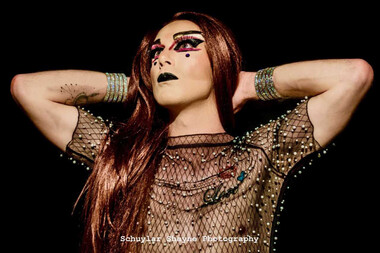
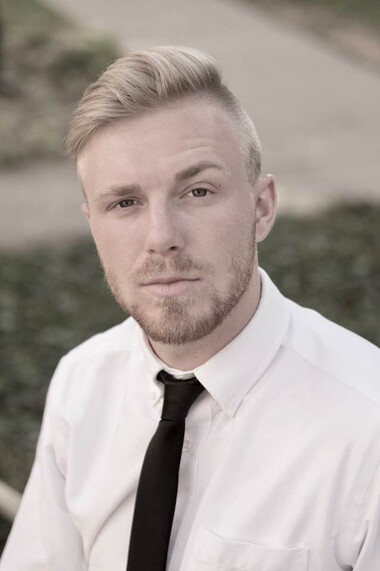
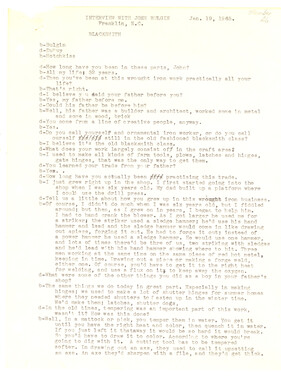





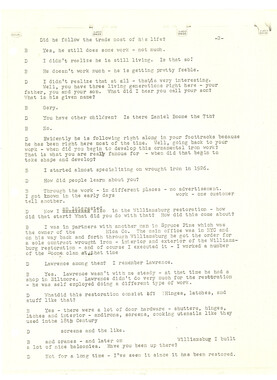



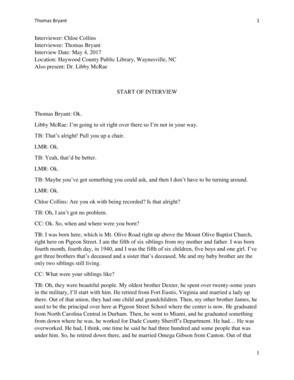






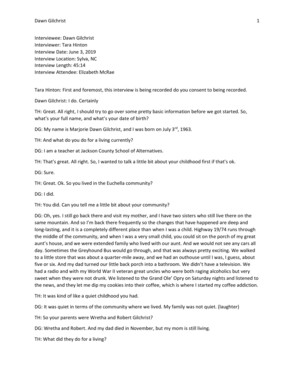















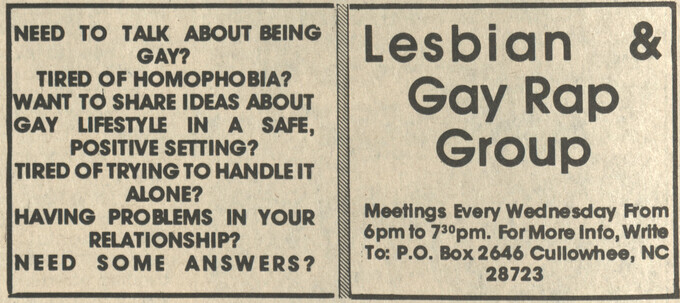

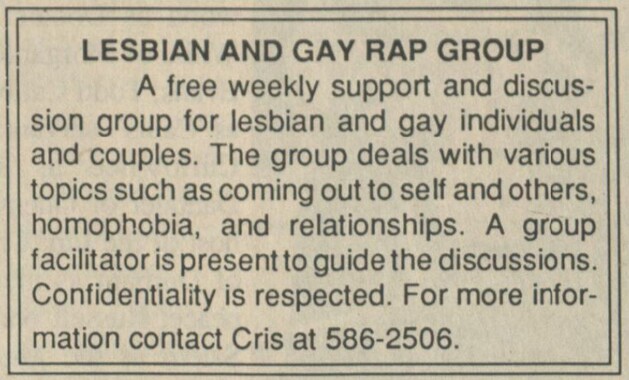
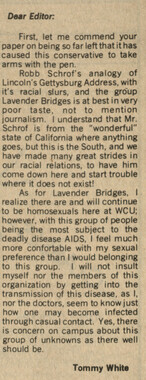
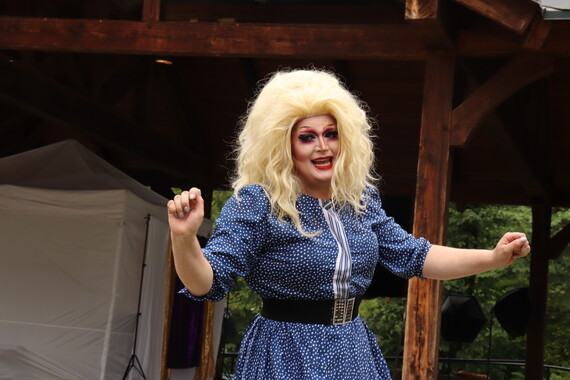
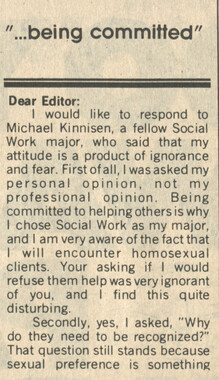

.jpg)


